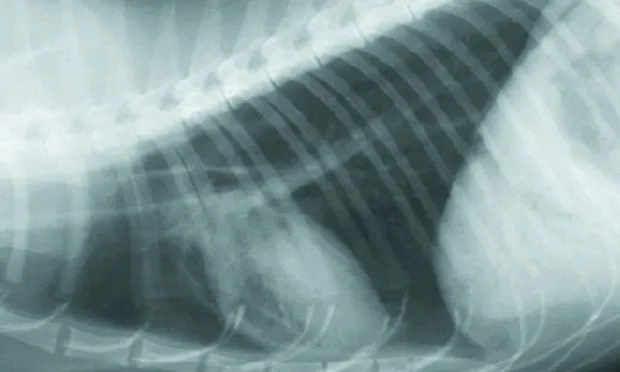Fatal Air Embolism in an Adult Cat

These images (See PDF) were obtained during a pneumocystogram performed after clinical signs of stranguria and hematuria did not respond to antibiotic treatment. The procedure was uneventful until air was injected into the urinary bladder via a urethral catheter. Several seconds later the cat experienced a cardiac arrest that would not respond to cardiopulmonary resuscitation. The image of the urinary bladder (left) shows a soft tissue mass that was confirmed on necropsy and histopathology as transitional cell carcinoma. The thoracic radiograph (right) shows an air embolus in the right ventricle (and air throughout the vasculature of the liver), which caused the cat's death.
Air embolism occurs when a pocket of gas enters or is formed within the vascular compartment and subsequently obstructs blood flow. The consequences can be immediate and fatal if the obstruction involves vital organs such as the heart or lungs. In veterinary patients, this problem is usually iatrogenic, resulting from intravenous access mishaps, gas embolization associated with laparoscopic procedures, surgical procedures, and other less common incidents as occurred in this cat.
The death of this patient might have been avoided if pure carbon dioxide gas, which is highly soluble in body fluids, was used in place of room air. Room air should not be used as a contrast agent because nitrogen is a poorly soluble gas (representing approximately 80% of room air). In this case, the air under syringe pressure penetrated the vascular network of the pathologic bladder wall and gained access to the posterior vena cava, which transported the air embolus to the cat's right ventricle. In the ventricle it caused "air lock," thereby impairing venous return and cardiac output.